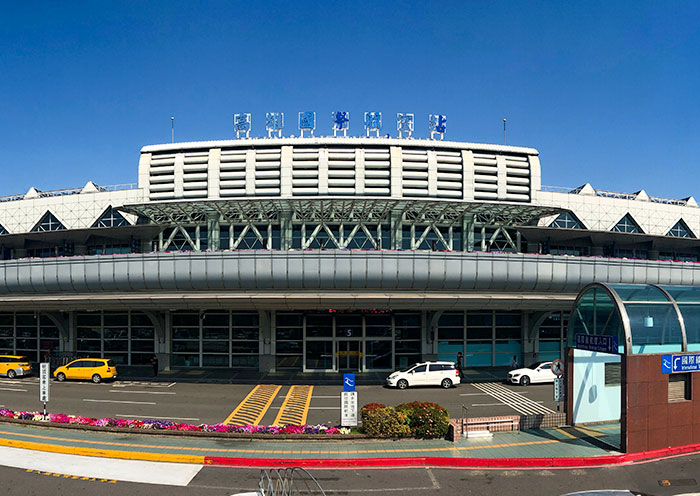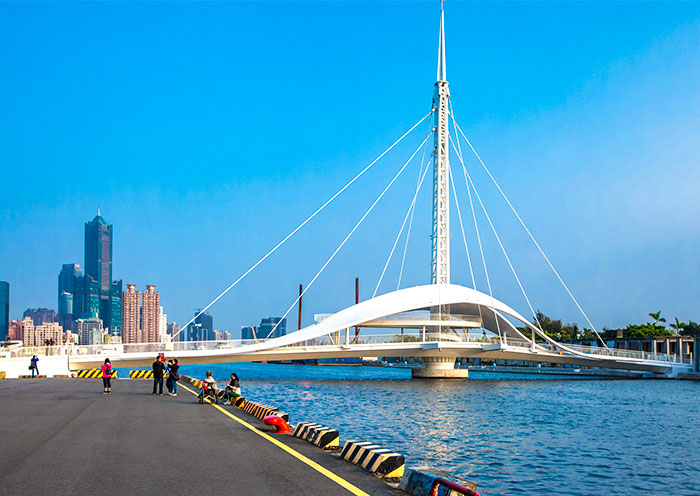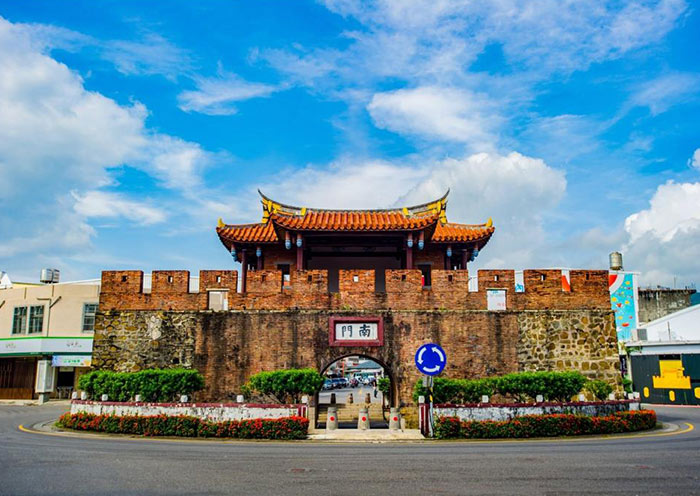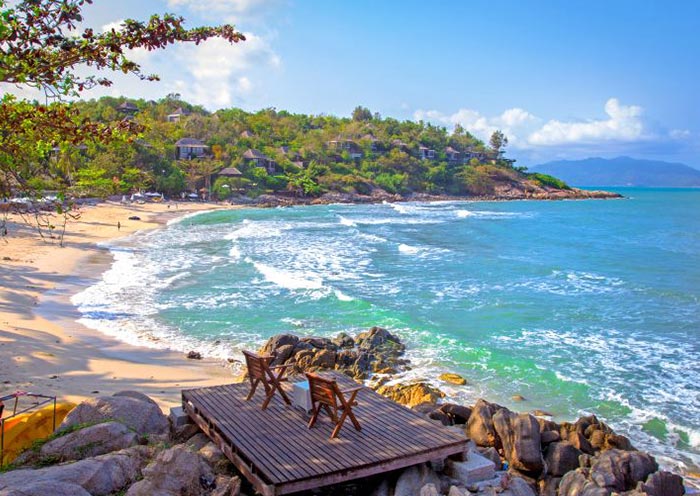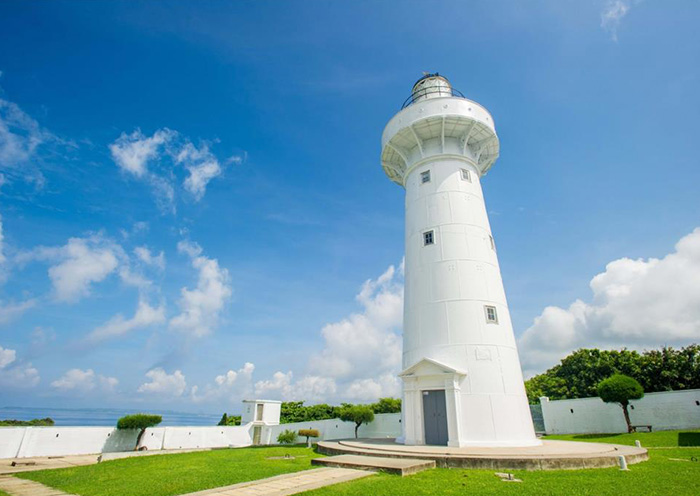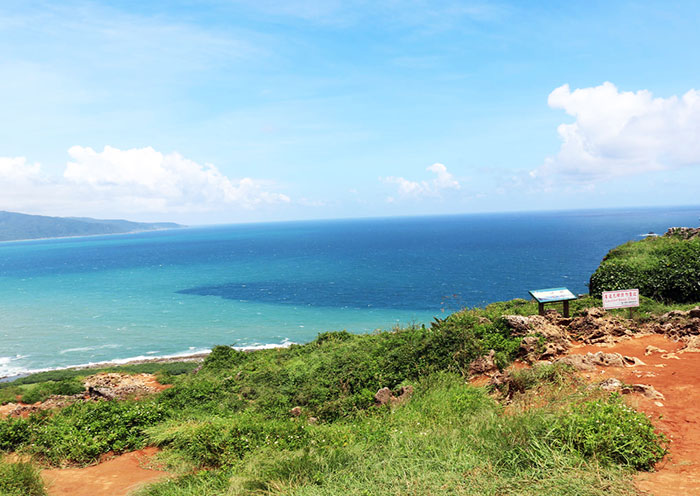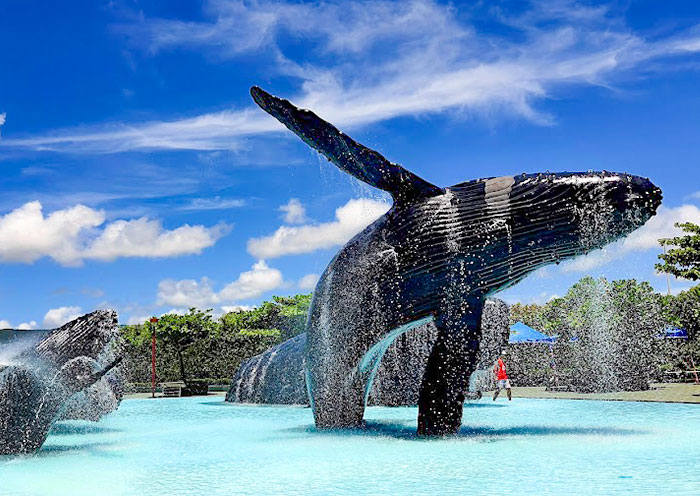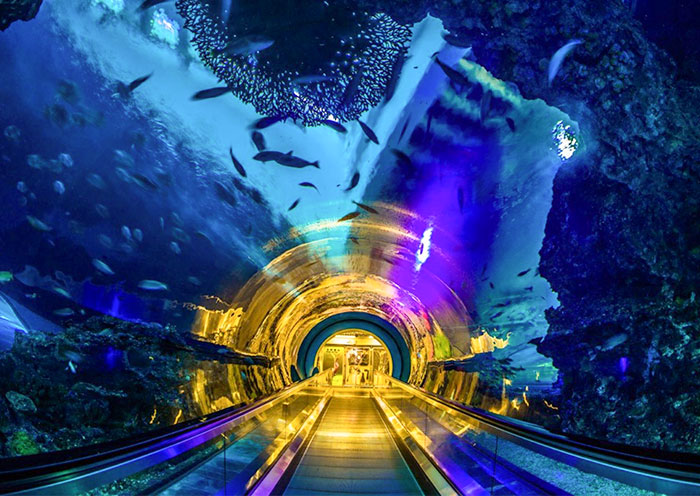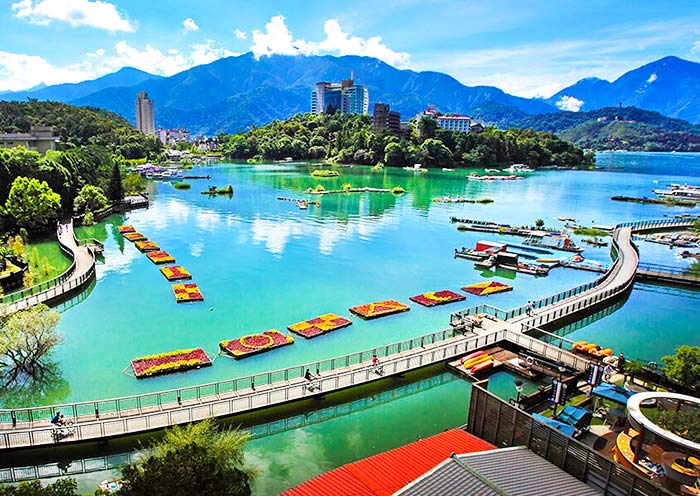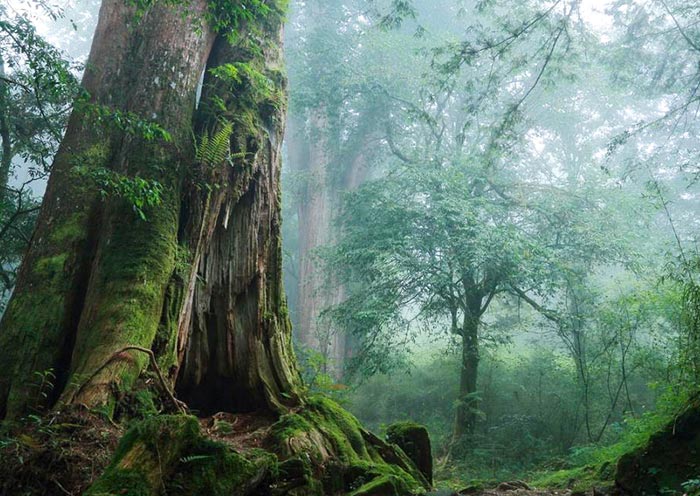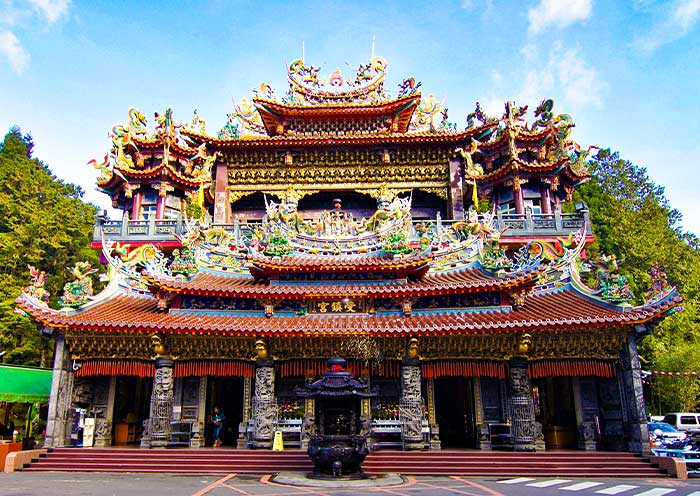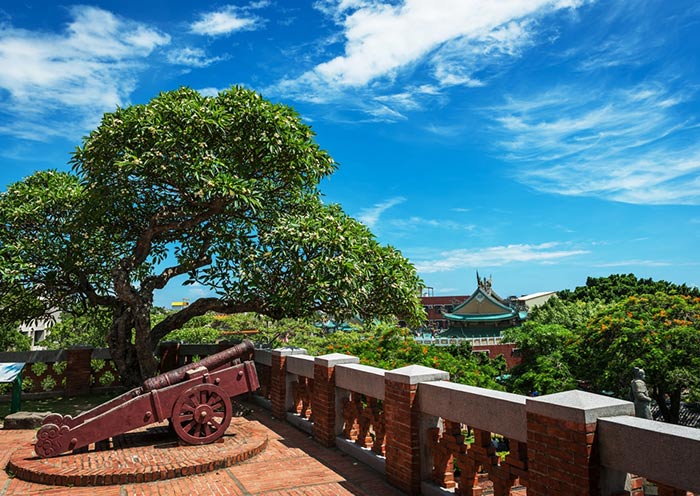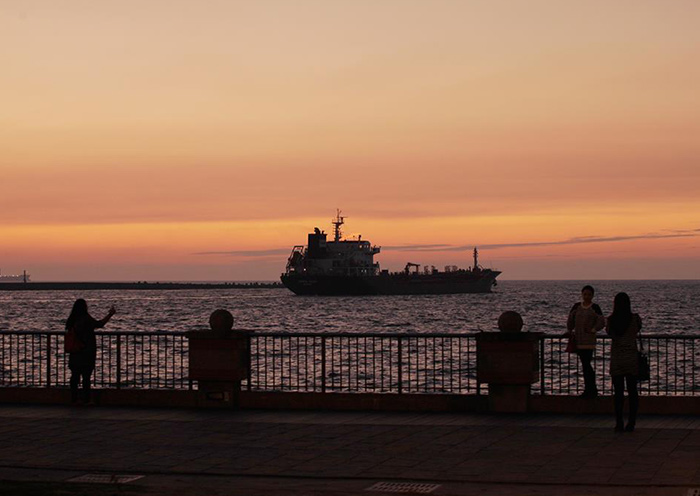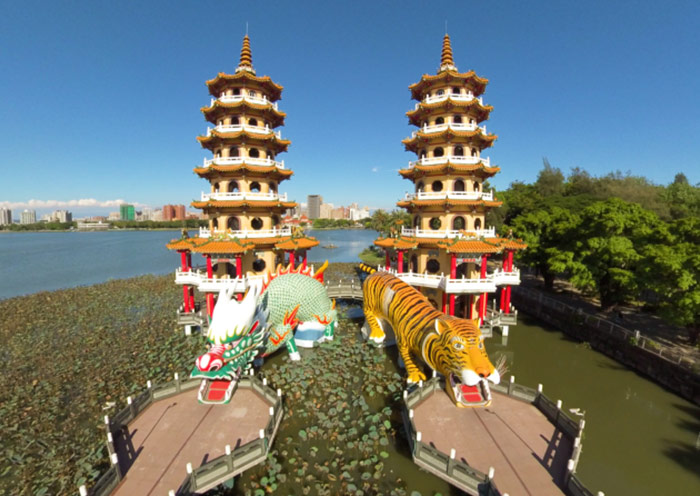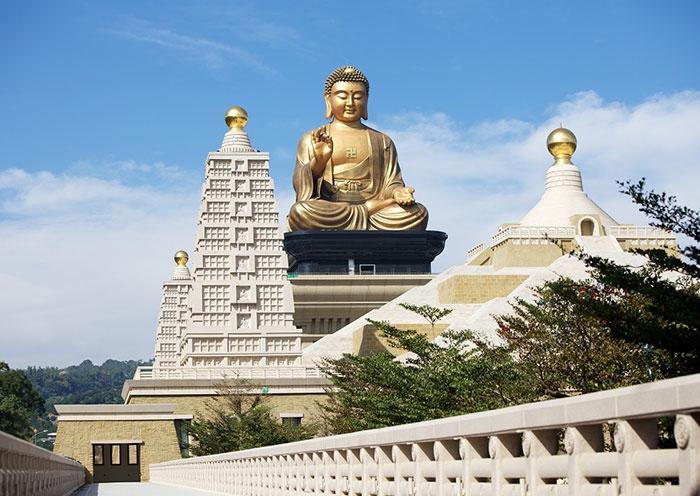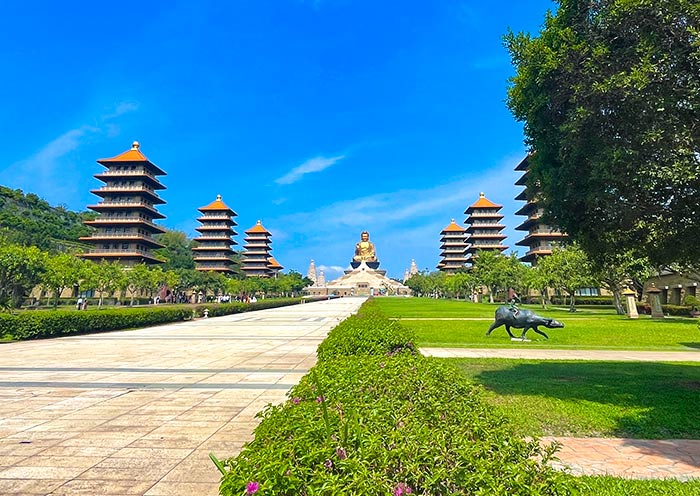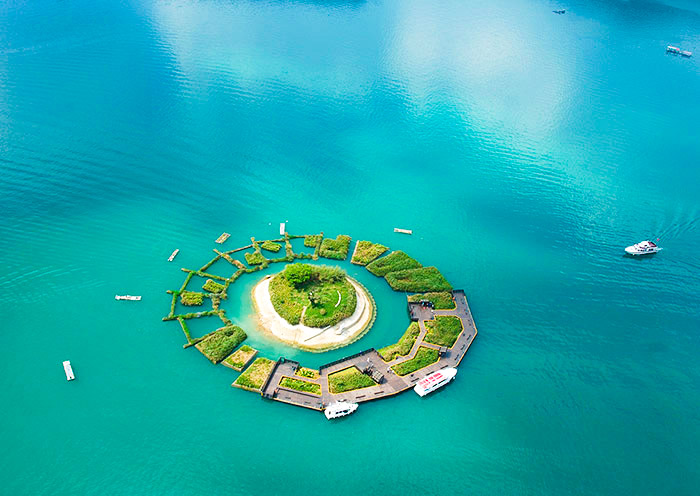
8 Days Kaohsiung Kenting Sun Moon Lake Alishan Tainan Kaohsiung Group Tour
- Kenting Baisha Bay:Renowned for its pristine shell sand, White Sand Bay boasts a 500-meter-long beach with crystal-clear blue waters.
- Sun Moon Lake:is a beautiful high-altitude lake and the largest freshwater lake in Taiwan.The misty waters and the clear, layered mountain scenery give it a poetic and picturesque quality, earning it a reputation as one of Taiwan's top eight scenic wonders.
- Fo Guang Shan Buddha Museum:located in Kaohsiung, is a grand cultural and spiritual site dedicated to Buddhism.
- From NT$35996per personThe minimun price in the join-in group date.
-
D1 Please proceed to the designated hotel for check - in on your own
Taiwan is a place rich in diverse travel experiences. Here, you can find various exciting themes, including delicious cuisine, historical and cultural attractions, bustling shopping centers, ecology, railways, forests, hot springs, and indigenous culture, among others.
Travel Tips:
Transportation: Our staff will contact you in advance, so please ensure your phone is accessible and provide contact information for instant messaging platforms such as Line, WeChat, or WhatsApp. The travel agency will inform you in advance about the hotel check-in process, and you can directly check in and rest at the hotel. If you haven't received any notifications, please promptly contact the travel agency staff to assist you. (Details can be found in the departure notice)
Meals: None
Accommodation: Kaohsiung Hotel
- Kaohsiung International Airport
- Great Harbor Bridge
-
D2 Dapeng Bay National Scenic Area- Donggang Donglong Temple - Hua Qiao Seafood Market- Green Bean Soup- Hengchun Ancient City - Kenting Baisha Bay(White Sand Bay)-hotel check-in
Known as the "Southern Border," Pingtung County is Taiwan's southernmost region. It boasts a long, narrow coastline bordered by the Pacific Ocean to the east, the Taiwan Strait to the west, and the Bashi Channel to the south. With its tropical climate, Pingtung offers breathtaking views, swaying palm trees, and a charming tropical ambiance, earning it the nickname "Taiwan's South Pacific." It is home to Taiwan's first national park, Kenting National Park, as well as Xiaoliuqiu Island, scenic coastal highways, Dapeng Bay National Scenic Area, and Maolin National Scenic Area.
大鵬灣風景區 Dapeng Bay National Scenic Area
Dapeng Bay, Taiwan's largest lagoon, is part of the Dapeng Bay and Xiaoliuqiu scenic areas. The bay is rich in marine and plant life, with unique mangroves, including Avicennia marina, and coastal plants like goat's foot creeper. Animal life includes numerous species of birds, fish, and crabs, such as the fiddler crab.
東港東隆宮 Donggang Donglong Temple
Donglong Temple, often called "Wangye Temple" by locals, enshrines Lord Wunfu Qiansui. It serves as the primary temple for the Wangye Peace Festival, held every three years. The temple honors Lord Wun, a historical figure from the Tang Dynasty, and celebrates his contributions to the empire with vibrant ceremonies.
華僑市場 Hua Qiao Seafood Market
This popular evening market offers a wide range of local souvenirs and fresh seafood. For an authentic experience, choose seafood from the market and have it prepared on-site by professional chefs.
小吃(綠豆蒜) Green Bean Soup
Despite its name, this traditional dessert contains neither green beans nor garlic. It is a sweet soup made from peeled mung beans, which resemble crushed garlic after cooking. This hearty dessert originated as an energy-boosting snack for farmers and is now a must-have treat at celebratory feasts in Pingtung.
恆春古城 Hengchun Ancient City
Hengchun, meaning "eternal spring," was once called "Langjiao." The ancient city features four well-preserved gates forming a travel-friendly circuit. Visitors can explore landmarks like Tianhou Temple and Monkey Cave Mountain, or witness the natural gas fires near the East Gate.
墾丁白沙灣 Kenting Baisha Bay(White Sand Bay)
Renowned for its pristine shell sand, which is 85% pure, White Sand Bay boasts a 500-meter-long beach with crystal-clear blue waters. Featured in films like Cape No. 7 and Life of Pi, the bay offers breathtaking views and a serene escape.
Meals: Breakfast Lunch
Accommodation: Kenting
- Hengchun Ancient City
- Kenting Baisha Bay
-
D3 Kenting National Forest Recreation Area- Sail Rock- Eluanbi Lighthouse- Longpan Park Grasslands
墾丁國家森林遊樂區Kenting National Forest Recreation Area
Once an underwater coral garden, this unique forest was formed 500,000 years ago by tectonic activity. The park features rich biodiversity, monsoon rainforests, and karst limestone formations. It is home to Formosan macaques, red-bellied squirrels, and a variety of rare birds and marine life. Highlights include stalactites and stalagmites in caves like Yinlong Cave and Stone Pillar Treasure Hole.
帆船石Sail Rock
Standing 18 meters tall, this coral reef rock resembles a ship's sail, making it one of Kenting's iconic landmarks. The surrounding area offers stunning sea views and spectacular sunsets.
鵝鑾鼻燈塔Eluanbi Lighthouse
Built in 1881, this white, circular lighthouse is Taiwan's southernmost. Known as the "Light of East Asia," it offers panoramic views of the Pacific Ocean and the Bashi Channel.
龍磐公園大草原Longpan Park Grasslands
This expansive park offers unobstructed views of the ocean and is perfect for watching sunrises, sunsets, and stargazing. It features dramatic cliffs, grassy plains, and stunning vistas, earning recognition as one of Asia's underrated destinations.
Meals: Breakfast
Accommodation: Kenting
- Eluanbi Lighthouse
- Longpan Park
-
D4 National Museum of Marine Biology and Aquarium- Kaohsiung
國立海洋生物博物館 National Museum of Marine Biology and Aquarium
Established in 1991, this museum combines state-of-the-art technology and innovative displays to explore marine life across Taiwan, global oceans, and ancient seas. The museum’s highlights include coral kingdoms, polar ecosystems, and interactive exhibits.
Meals: Breakfast
Accommodation: Taichung
- National Museum of Marine Biology and Aquarium
- National Museum of Marine Biology and Aquarium
-
D5 Sun Moon Lake (Boat Tour)
日月潭Sun Moon Lake
Sun Moon Lake: is a beautiful high-altitude lake and the largest freshwater lake in Taiwan, situated at an elevation of 748 meters and covering an area of 116 square kilometers. The beauty of Sun Moon Lake is a harmonious blend of mountains and water, creating picturesque landscapes. The misty waters and the clear, layered mountain scenery give it a poetic and picturesque quality, earning it a reputation as one of Taiwan's top eight scenic wonders. The Sun Moon Lake Cycling Road has been recognized by CNNGO, a lifestyle and travel website under CNN, as one of the top ten most beautiful cycling routes in the world. If time allows, you can also experience the approximately 400-meter-long "Water Bicycle Path" here, offering a sensation akin to cycling on water. For quick travel around the lake, the best option is to take a lake cruise. While on the boat, you can enjoy the lakeside scenery and listen to interesting narrations by the captain, who offers insights into the local sights and history. The boats travel in a counterclockwise direction. There are three major piers at Sun Moon Lake: Shuishe Pier, Xuanguang Temple Pier, and Ita Thao Pier, with boats traveling counterclockwise (Shuishe Pier → Xuanguang Temple Pier → Ita Thao Pier → Shuishe Pier). The boat ticket is a day pass, allowing unlimited rides within a day.
Meals: Breakfast Lunch
Accommodation: Sun Moon Lake
- Sun Moon Lake
- Sun Moon Lake
-
D6 Sun Moon Lake > Alishan Forest Recreation Area > Chiayi > Hotel Check-in
阿里山森林遊樂園區 The Alishan National Forest Recreation Area: boasts five unique attractions: the Forest Railway, Divine Trees, Sea of Clouds, Sunrise, and Cherry Blossoms. It is Taiwan's most renowned and beloved forest recreation area, a shimmering emerald gem on the Alishan mountain range radiating with dazzling brilliance. Depending on individual physical strength and preferences, you can choose a different route.
Route A: Zhaoping Train Station, Sisters Pond, Four Sisters, Happiness from Golden Pig, Eternal Love, Mulan Garden, Shouzheng Temple
(You can purchase tickets on your own to take the park train or shuttle bus to Zhaoping Station. From there, you can stroll downhill to the Shouzhen Temple. After visiting, you have the option to take the park shuttle bus back to the Visitor Center or continue on to the B line.)
Route B: Shouzheng Temple, Three Generations Tree, Alishan Museum, Xiang-lin Elementary School, Ci-yun Temple, Alishan Sacred Tree
(You can buy tickets on your own to take the park shuttle bus to Shouzhen Temple. From there, enjoy a leisurely walk among the sacred tree groves. You can then take the park train from the Alishan Sacred Tree site back to Alishan Station.)
Chiayi
Chiayi is the starting point of the Alishan Forest Railway. In the past, it thrived due to the development of forestry. With an early development history, there are many historical sites in the urban area, which have become important tourist resources. In terms of local specialties, turkey rice, square pastries, Alishan almond jelly, snowflake cookies, small steamed buns, sweet potatoes, and pineapple cakes are the most well - known. Regarding cultural activities, during the Japanese colonial period, painting was the most famous, and Chiayi once had the reputation of the "City of Painting", with representatives such as Chen Cheng - po. In recent years, the Chiayi International Band Festival and the Awakening Music Festival have been the most prosperous. Chiayi City is the first and currently the only city in the country where all urban buses are fully electrified and have a low - floor design.
Meals: Breakfast
Accommodation: Chiayi Hotel
- Alishan
- Shouzheng Temple
-
D7 Tainan (Anping Tree House + Anping Old Fort)> Kaohsiung Sizihwan Bay + Former British Consulate at Takao
安平古堡 Anping Old Fort
Anping Old Fort, originally built by the Dutch in 1624 as Fort Zeelandia, served as a defensive stronghold. After Zheng Chenggong captured it in 1662, it was renamed Anping Town and became a key administrative center. Over time, the fort declined due to siltation and destruction during the Qing era. Today, it stands as a historical site, with its remaining brick walls and ancient banyan trees bearing witness to nearly 400 years of history.
安平樹屋 Anping Treehouse
The Anping Treehouse, originally a 19th-century warehouse for Tait & Co., is now a unique attraction where banyan trees have overtaken the structure. The intertwining roots and dense canopy create a rare tree-building symbiosis, reminiscent of Angkor Wat's Ta Prohm. Visitors can explore the site via wooden walkways and enjoy its vibrant ecosystem of squirrels and birds.
西子灣 Xiziwan
Xiziwan is famous for its stunning sunsets, natural rock formations, and tropical beach vibes. Visitors can enjoy scenic views of Kaohsiung Harbor, explore attractions like the Former British Consulate, and admire the "Xizi Sunset," one of Kaohsiung's top eight scenic spots.
打狗領事館 The Former British Consulate at Takao
The Former British Consulate at Takao, built in 1865, is the oldest surviving Western-style building in Taiwan. Perched on a hill overlooking Kaohsiung Harbor, it once served as a consulate and trade hub. Today, it is a historical site featuring colonial architecture, stunning harbor views, and exhibitions on local history.
Meals: Breakfast Lunch
Accommodation: Kaohsiung
- Anping Old Fort
- Xiziwan
-
D8 Lotus Pond Scenic Area > Fo Guang Shan Buddha Museum
蓮池潭 Lotus Pond Scenic Area
The Lotus Pond Scenic Area in Kaohsiung is a picturesque destination known for its tranquil waters, vibrant lotus blooms, and iconic temples. Highlights include the Dragon and Tiger Pagodas, Spring and Autumn Pavilions, and Confucius Temple. Visitors can enjoy scenic walks, cultural landmarks, and the serene atmosphere of this popular attraction.
佛光山佛陀紀念館 Fo Guang Shan Buddha Museum
The Fo Guang Shan Buddha Museum, located in Kaohsiung, is a grand cultural and spiritual site dedicated to Buddhism. It houses a sacred Buddha tooth relic and features a vast complex with eight pagodas, a central Buddha statue, and exhibition halls. Visitors can explore Buddhist culture, art, and architecture in a serene and majestic setting.
Your trip ends in Kaohsiung. If you need to arrange for an additional hotel or airport transfer service, please inform your travel specialist when booking the itinerary. Thank you.
Meals: Breakfast
Accommodation: None
- Lotus Pond Scenic Area
- Fo Guang Shan
Departure Date & Price
- Sunday
- Monday
- Tuesday
- Wednesday
- Thursday
- Friday
- Saturday
- 1
- 2
- 3
- 4
- 5
- 6
- 7
- 8
- 9
- 10
- 11
12
NT$ 35996- 13
- 14
- 15
- 16
- 17
- 18
- 19
- 20
- 21
- 22
- 23
- 24
- 25
- 26
- 27
- 28
- 29
- 30
- 31
- Sunday
- Monday
- Tuesday
- Wednesday
- Thursday
- Friday
- Saturday
- 1
- 2
- 3
- 4
- 5
- 6
- 7
- 8
9
NT$ 36000- 10
- 11
- 12
- 13
- 14
- 15
- 16
- 17
- 18
- 19
- 20
- 21
- 22
- 23
- 24
- 25
- 26
- 27
- 28
- 29
- 30
Price Guide
Price Includes
Arrange suitable vehicles according to the number of people
Double rooms (twin sharing) with basic room type (no single rooms or double beds, The breakfast charge for children not occupying a bed will follow the hotel's policy.)
If there are a single male or female traveler within the group, the travel agency reserves the right to arrange triple rooms, room-sharing, or require the traveler to pay for the single room supplement.
Breakfast is included at all hotels, 3 special lunch and will be provided according to the itinerary.
Other meals will be at the traveler's own expense. If a traveler chooses not to dine for personal reasons, the meal fee will not be refunded.
Chinese, English, or bilingual (Chinese-English) speaking guides.
For Join group tours, specific guides cannot be designated. The travel agency will assign professional guides based on the actual situation.
1-6 Travelers: Driver-guide service. The driver can provide basic English communication but will not offer detailed explanations.
Whenever possible, the driver will accompany guests during the itinerary. If parking issues prevent this, a meeting time for pickup will be arranged with the guests.
7 or More Travelers, a tour guide will accompany the group.
All entrance fees are included in the tour.
Entrance tickets to all listed attractions in the itinerary are guaranteed. In the event of unexpected circumstances preventing a visit to any site, the travel agency will consult with the travelers to arrange alternative attractions.
For attractions listed in the itinerary that require park shuttle services, please purchase tickets on your own.
Tour car insurance and local insurance.
Travelers are advised to purchase personal travel insurance or inconvenience insurance separately.
One bottle of mineral water per person per day will be provided as a complimentary service.
Travel agency service charge.
Price Excludes
Taiwan offers visa-free entry for citizens of many countries. If there are special circumstances requiring a special application, the relevant fees are not included here.
Hotels default to double occupancy. If a traveler chooses to stay in a single room, an additional single room supplement must be paid.
Any room charges incurred due to changes during the itinerary since the rooms are booked in full.
Other personal expenses such as laundry, phone calls, faxes, pay-per-view television, beverages, snacks, cigarettes, and alcohol within the hotel.
In the case of irresistible and objective reasons beyond the travel agency's control (such as natural disasters, wars, strikes, epidemics, etc.) or special circumstances such as flight cancellations or insufficient group size, the travel agency reserves the right to cancel or change the itinerary. Any additional costs incurred will be borne by the travelers.
Tips for drivers and guides.
Please tip each driver and guide 100 NT dollars per guest per day.
Airport Transfer is not included. If you need the travel agency's assistance with booking, there will be an additional fee.
Airfare is not included in the tour cost.
If you need the travel agency's assistance with booking, there will be an additional fee.
-
-
- Data in submission...
